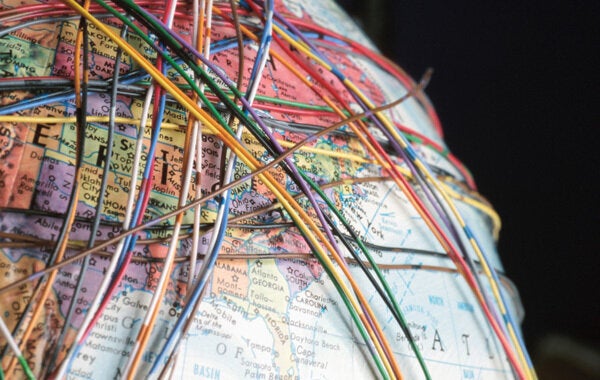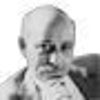
The fossil fuel energies that propelled the great Industrial Revolutions of the past two centuries are now sunsetting and the infrastructure within which they are embedded is on life support. All across the world people are without work and becoming increasingly desperate. An anxious human race is asking the question, what do we do?
Here in the United States, President Obama has made the issue of jobs and the economic recovery his top priority in 2010, but has yet to deliver a comprehensive plan for rejuvenating the economy.
The irony is that President Obama, who was elected, in large part, by a generation who is growing up on Facebook and the vast distributed power of the Internet, appears to not understand the job potential of a distributed Third Industrial Revolution. Today, the information and communications technologies that gave rise to the Internet are being used to reconfigure the world's business models and power grids, enabling millions of people to collect renewable energy and produce their own electricity in their homes, offices, retail stores, factories, and technology parks and share it peer-to-peer across smart grids, just as they now produce and share their own information in cyberspace. This is a Third Industrial Revolution and will create millions of new jobs.
The question is often asked as to whether renewable energy, in the long run, can provide enough power to run a national or global economy. Just as second generation information-systems allow businesses to connect thousands of desktop computers, creating far more distributed computing power than even the most powerful centralized supercomputers, millions of local producers of renewable energy, with access to intelligent utility networks, can potentially produce and share far more distributed power than the older centralized forms of energy--oil, coal, natural gas, and nuclear--that we currently rely on.
While President Obama talks about green technologies and new jobs, his administration's vision is limited to erecting vast centralized wind and solar parks in the Midwest and Southwest and laying down high voltage smart grid power lines to send the electricity back east. And in recent weeks he's even retreated further, advocating a new generation of nuclear powers plants, offshore oil and gas drilling, and carbon capture and storage technology to boost coal power generation--in effect, embracing all of the old centralized top-down technologies of the previous century--none of which create a new economic infrastructure to support millions of new jobs.
The transition to the Third Industrial Revolution, by contrast, will necessitate a wholesale reconfiguration of the entire economic infrastructure of the country, creating millions of jobs and countless new goods and services. The U.S. will need to invest in renewable energy technology on a massive scale; convert millions of buildings, transforming them into power plants; embed hydrogen and other storage technology throughout the national infrastructure; transform the automobile from the internal combustion engine to electric plug-in and fuel-cell cars; and lay down an intelligent utility network.
The remaking of the nations' infrastructure and the retooling of industries is going to require a massive retraining of workers on a scale matching the vocational and professional training at the onset of the First and Second Industrial Revolutions. The new high-tech workforce of the Third Industrial Revolution will need to be skilled in renewable energy technologies, green construction, IT and embedded computing, nanotechnology, sustainable chemistry, fuel-cell development, digital power grid management, hybrid electric and hydrogen-powered transport, and hundreds of other technical fields.
Entrepreneurs and managers will need to be educated to take advantage of cutting-edge business models, including open-source and networked commerce, performance contracting, distributed and collaborative research and development strategies, and sustainable low-carbon logistics and supply-chain management. The skill levels and managerial styles of the Third Industrial Revolution workforce will be qualitatively different from those of the workforce of the Second Industrial Revolution.
The Third Industrial Revolution economic development plan was officially embraced by the European Parliament in 2007 and is currently being pursued by way of various EU Commission initiatives as a means of addressing the triple challenge of the global economic meltdown, energy security, and climate change. Cities, regions, and nations across Europe are beginning to implement various parts of the plan to make Europe the first post-carbon economy by 2050 and, in the process, create millions of jobs for a 21st Century workforce.
The U.S. can do the same. The Obama administration and the U.S. Congress should consider creating a second stimulus package, complete with financial outlays, tax credits and incentives for small and medium sized businesses and homeowners, as well as appropriate codes, regulations, and standards, to ease the U.S. economy into a Third Industrial Revolution. For those who say that we can't afford it, the question becomes this: can we afford to pour hundreds of billions of dollars into an aging Second Industrial Revolution whose energies have matured and whose infrastructure is outmoded, with little hope of providing millions of jobs for U.S. workers?
The Third Industrial Revolution leads to a new social vision where economic power itself is broadly distributed, encouraging unprecedented new levels of collaboration among peoples and nations. Just as the distributed communications revolution of the last decade spawned network ways of thinking, open-source sharing, and the democratization of communications, the Third Industrial Revolution does the same with the democratization of energy. We begin to envision a world where hundreds of millions of people are empowered, both literally and figuratively, with momentous implications for social and political life.
Like information, energy too becomes a collaborative effort in the 21st Century--a shared experience designed to optimize the common good. Energy cooperatives are just now being established around the world. Small and medium sized enterprises and home owners are beginning to pool their risks and opportunities and share in the production and distribution of renewable energies. Even in the American West, long a stronghold of the traditional marketplace, where the pursuit of individual self-interest is a cardinal value, ranchers are coming together in energy cooperatives to advance their collective interest.
Economic activity is no longer an adversarial contest between embattled sellers and buyers but, rather, a collaborative enterprise between like-minded players. The classical economic idea that another's gain is at the expense of one's own loss is replaced by the idea that enhancing the well-being of others amplifies one's own well-being. The win/lose game gives way to the win/win scenario.
In the distributed economy, where collaboration trumps competition, inclusivity replaces exclusivity and transparency and openness to others becomes essential to the new way of conducting business, empathic sensibility has room to breathe and thrive. It is no longer so constrained by hierarchies, boundaries of exclusion, and a concept of human nature that places acquisitiveness, self-interest, and utility at the center of the human experience.
Today's younger generation is growing up on the Internet and collaborating in distributed global social spaces. Why shouldn't they also be empowered to generate and share their own renewable energy on a distributed continental intergrid? Just as the distributed information and communications revolution created millions of jobs, the distributed renewable energy revolution will follow suit. We need to begin the journey into a Third Industrial Revolution.
